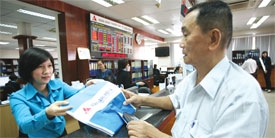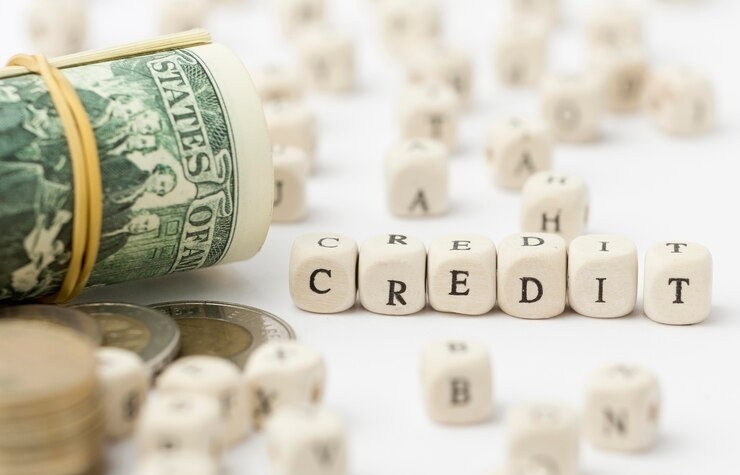Risk adverse, cash rich banks failing to come to the party
 To enhance credit growth, many banks have offered loan packages for different sectors with rates even lower than the State Bank’s lending cap of 15 per cent, but the disbursement of those loan packages has been indolent.
To enhance credit growth, many banks have offered loan packages for different sectors with rates even lower than the State Bank’s lending cap of 15 per cent, but the disbursement of those loan packages has been indolent.
By the end of April, top-tier Eximbank’s credit growth was minus 5 per cent, while smaller banks OCB and HDBank’s first quarter credit growth rates were minus 2 per cent and minus 5 per cent, respectively.
In the year to the end of March, Vietinbank’s total outstanding loans hit VND280 trillion ($13.44 billion), down 2.92 per cent against the beginning of this year.
“Enterprises with feasible projects and good financial health are not borrowing because of a difficult economy. Weak enterprises have high demand, but we do not dare lend due to bad debt fears,” said Truong Van Phuoc, general director of Eximbank.
On April 11, Eximbank launched a $288 million loan package with a lending rate of 16.5 per cent to exporters, small- and medium-sized enterprises and low-income people to purchase houses. However, only $72 million was disbursed.
Smaller creditor DaiA Bank in March launched a VND1,000 billion ($48 million) medium-term loan package, with a maximum loan of VND30 billion ($1.44 million) per customer, with up to a five-year repayment period.
Nevertheless, DaiA Bank director Le Huy Dung said there had been few takers. “Of course, weak enterprises are ready to borrow at any cost, but we will not lend despite having an abundance of capital,” he said.
DaiA Bank, like all banks, is reluctant to risk bad debts, despite having cash to burn for loans.
To help demand meet supply, former vice chairman of the National Financial Supervisory Committee Le Xuan Nghia said the government could remove this “bottleneck” by buying back banks’ bad debts to clean the balance sheets of banks and enterprises.
“Commercial banks only lend to enterprises without bad debts and have good financial health. With such a credit safety requirement, 97 per cent of enterprises cannot access banks’ low-cost capital,” Nghia said.
According to a State Bank report sent to the National Assembly Economic Committee, the Vietnamese banking system’s credit growth in the year to the end of April was minus 0.66 per cent.
Banks, meanwhile, are tapping distribution channels to actively access enterprises.
State Bank figures show after the 15 per cent lending cap is applied from May 8 for four prioritised sectors, which include agriculture and rural development, export, supporting industry, and small and medium-sized enterprises, the market rate for those sectors reduced to less than 15 per cent and for other sectors it fell by 1-1.5 per cent.
From May 7-15, the rate offered by state-owned commercial banks for enterprises in general reduced from 15-17.5 to 14-16.5 per cent, while joint stock commercial banks’ rate dropped from 16.5-19 to 15-17.5 per cent.
What the stars mean:
★ Poor ★ ★ Promising ★★★ Good ★★★★ Very good ★★★★★ Exceptional
Related Contents
Latest News
More News
- The promotion of ESG via banking (November 21, 2024 | 09:32)
- Standard Chartered committed to Vietnam’s financial success (November 21, 2024 | 09:24)
- Full ESG adoption the priority for Agribank (November 21, 2024 | 09:07)
- Banks entice youth with tech advances (November 21, 2024 | 08:00)
- ESG represents a shift towards sustainability for banks (November 20, 2024 | 13:00)
- GGGI supports Vietcombank’s debut of $80 million green bonds (November 20, 2024 | 11:20)
- SHB and the ESG journey: creating social value in every step (November 19, 2024 | 15:00)
- Banking sector contributes to ESG, green growth, and sustainable development (November 19, 2024 | 14:42)
- ESG implementation in banking: from awareness to action (November 19, 2024 | 12:08)
- VIR hosts 'ESG in Banking: Leading Through Implementation' conference (November 19, 2024 | 11:14)




 Tag:
Tag:




















 Mobile Version
Mobile Version